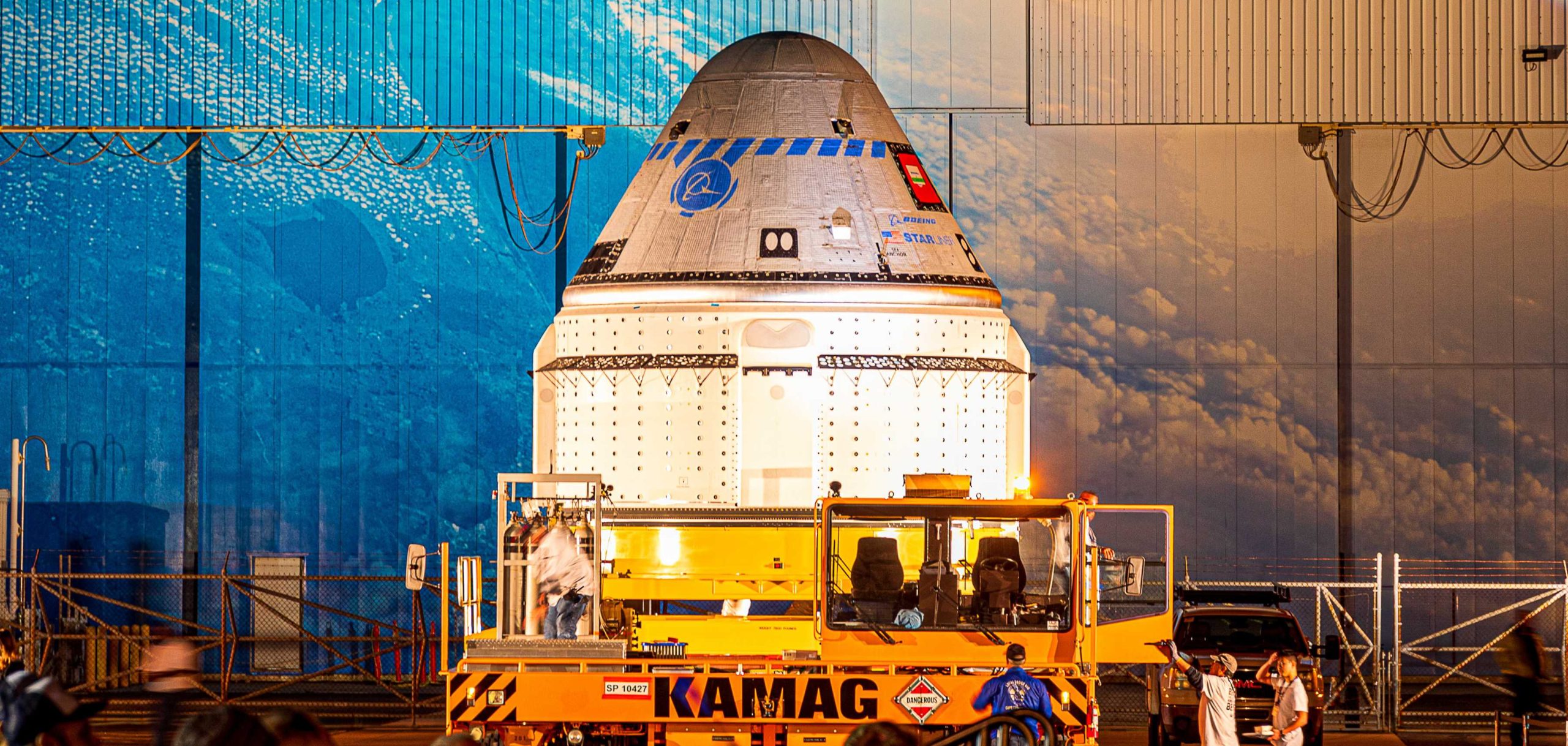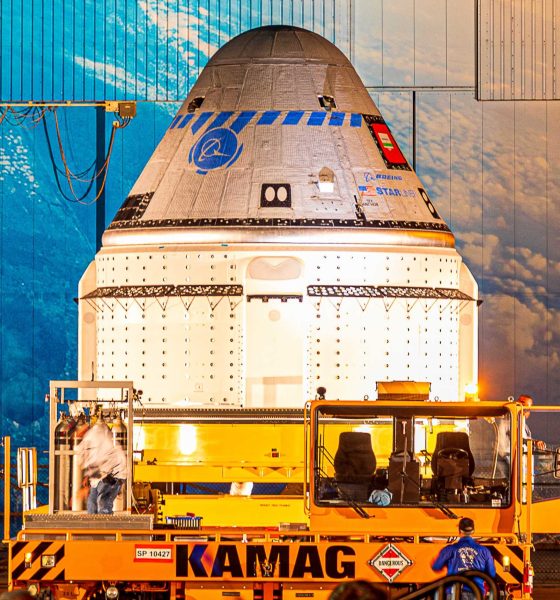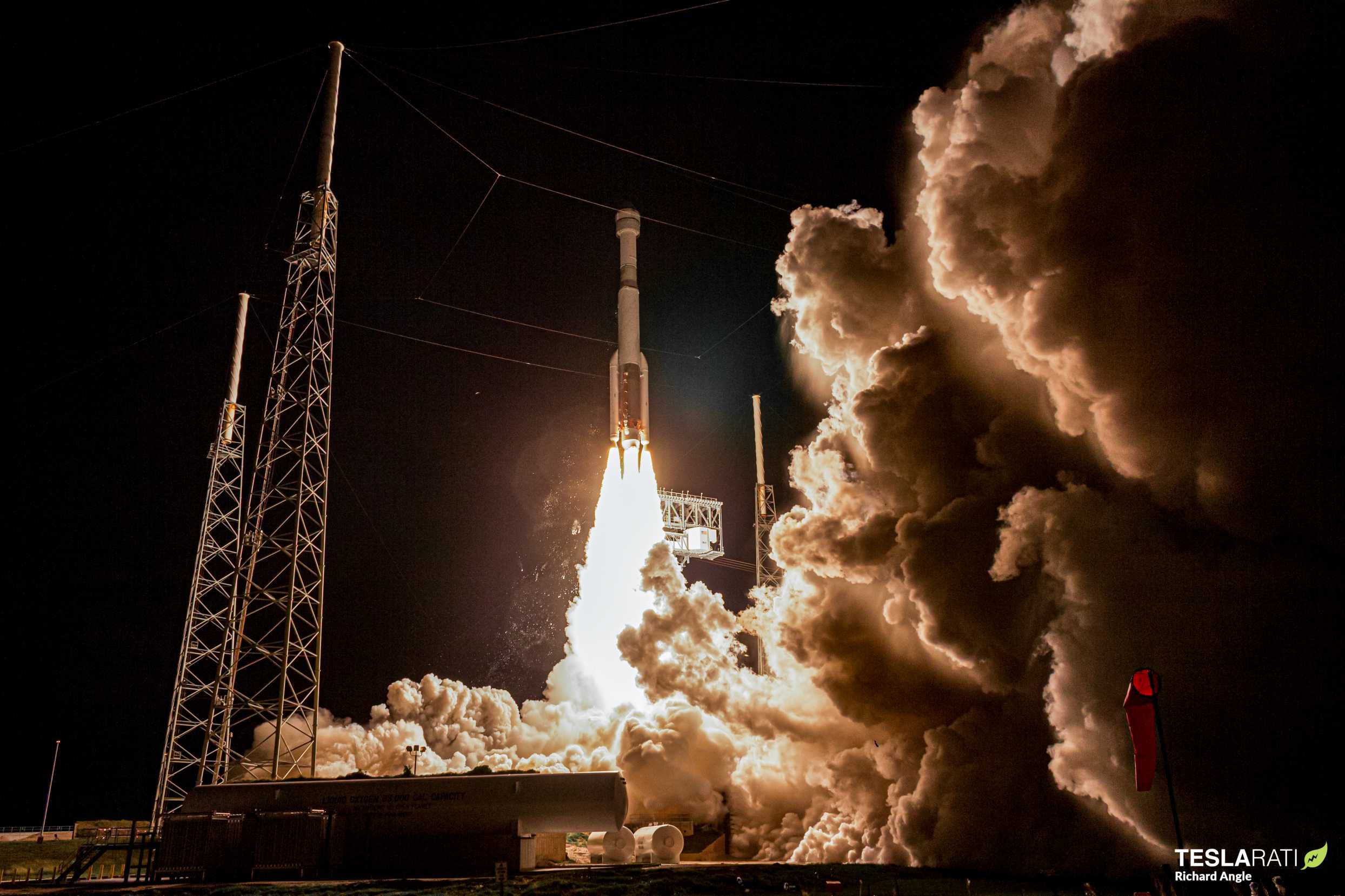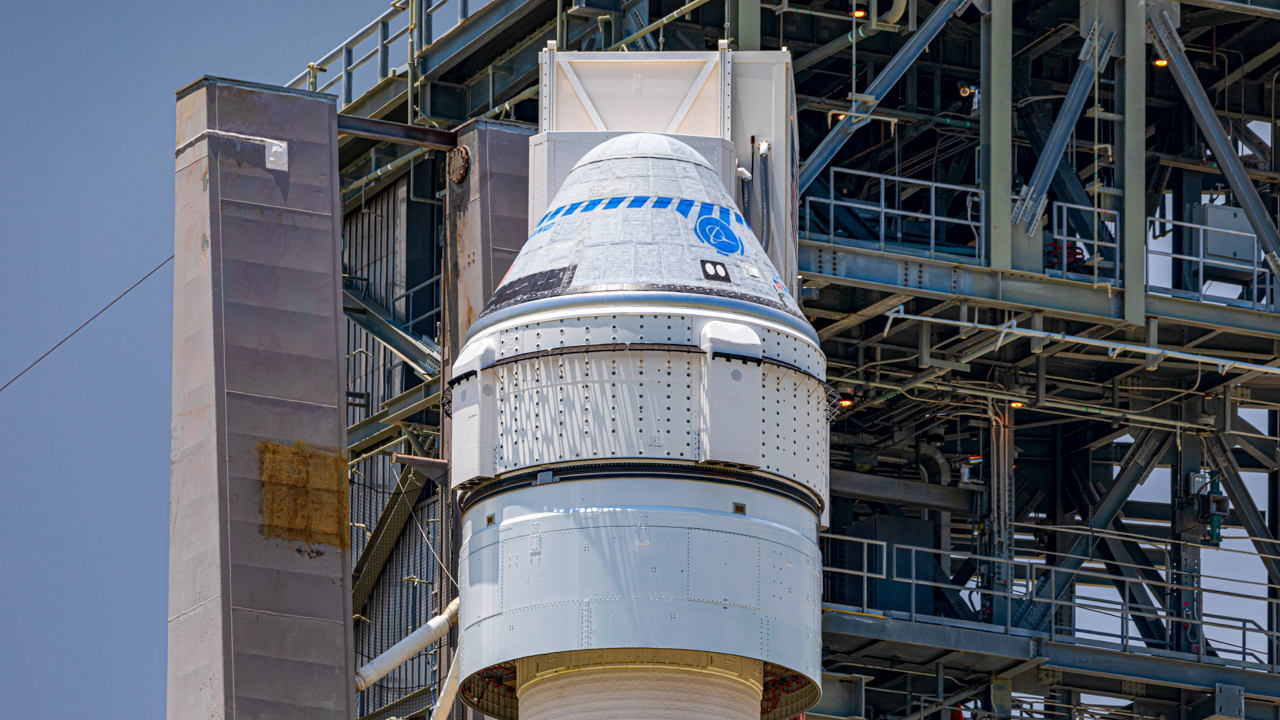

News
Boeing’s Starliner slightly delayed, but ready for launch
Boeing and NASA have once again delayed Starliner’s Crewed Flight Test to no earlier than May 1st, 2024.
The launch was originally targeted for mid-April, but this time, scheduling at the International Space Station is the reason for the delay, as the orbiting outpost is fairly busy at the moment.
There are currently 7 vehicles docked at the Space Station, including two Dragon capsules, a Cygnus resupply freighter, and 4 Soyuz capsules (2 Crew, 2 Cargo), so it’s understandable why NASA and Boeing would want to push the Starliner launch just slightly.
Boeing took a major step towards the launch of Starliner’s first crewed flight test when it began fueling the service module and crew capsule. This will enable the capsule to conduct burns to control itself while in orbit.
The capsule assigned to this mission is Spacecraft 3, aka Calypso, which flew the first Orbital Flight Test in 2019 and was unable to make it to the ISS due to numerous issues that arose after separating from the Atlas V second stage.

Starliner takes flight for the first time during OFT-1 in 2019 (Credit: Richard Angle)
For the first Crewed Flight Test, there will be 2 experienced NASA astronauts onboard. Commander Barry Wilmore and Pilot Sunita Williams. They will both be making their 3rd trip to space.
The current pair weren’t the first astronauts assigned to CFT-1, due to the ongoing delays, at various points, 4 other astronauts were assigned to the test flight, including Nicole Mann who ended up switching over to Crew 5 and taking a Crew Dragon capsule to the ISS.
During this most recent delay, Boeing took the time to finish removing the insulating tape that was found to be flammable, finish software reviews, and review a new soft link in the parachute system. The soft link is what connects the main line from the capsule to the risers up to the canopy.
There are currently no items under review that could potentially cause further lengthy delays.
During a recent press conference at NASA’s Johnson Space Center, Flight Director Steve Lammers detailed what to expect before the flight.
The crew will perform a dry dress rehearsal, similar to what SpaceX does with Crew Dragon. However, the test will be completed inside United Launch Alliance’s Vertical Integration Facility, not at the launch pad.
The day before launch, the Atlas V rocket with Starliner stacked on top will be moved to the launch pad. In the last launch attempt, the rocket sat at the launch pad for a few days, enduring Florida thunderstorms, which led to moisture collecting in some of the Service Modules valves, causing a very significant delay to the Starliner program.
Starliner at LC-41 before the first OFT-2 attempt (Credit Richard Angle)
The hatch will be closed 1 hour and 24 minutes prior to launch, with the pad being cleared about with ~50 minutes remaining in the countdown.
This will be the first mission controlled by Houston after lift-off since the last Space Shuttle mission, STS-135.
There will be no live video from the capsule during ascent and transit to the ISS, Ed Van Cise, Starliner rendezvous flight director said the system is lacking the connection from the data to a transmission system. The recorded video will be downlinked after the capsule is docked.
The crew will dock with the ISS 24 hours after lift-off after conducting numerous tests of the Starliner systems.
The capsule will stay docked with the Space Station for a minimum of 8 days.
After undocking, the crew will perform more tests ahead of the de-orbit burn and eventual landing in the Western United States.
The capsule will land under parachutes, and the airbags will deploy just before touchdown to provide a soft landing for the crew.
All in all, this mission has been a long time coming for the company. The original contract called for six flights, and with the Atlas V being retired, there are currently no other human-rated launch vehicles (that are compatible) to launch Starliner, and if NASA wants to extend that contract with Boeing, ULA would need to get the approval to launch Starliner on Vulcan.
Questions or comments? Shoot me an email at rangle@teslarati.com, or Tweet me @RDAnglePhoto.

Elon Musk
Elon Musk confirms xAI’s purchase of five 380 MW natural gas turbines
The deal, which was confirmed by Musk on X, highlights xAI’s effort to aggressively scale its operations.

xAI, Elon Musk’s artificial intelligence startup, has purchased five additional 380 MW natural gas turbines from South Korea’s Doosan Enerbility to power its growing supercomputer clusters.
The deal, which was confirmed by Musk on X, highlights xAI’s effort to aggressively scale its operations.
xAI’s turbine deal details
News of xAI’s new turbines was shared on social media platform X, with user @SemiAnalysis_ stating that the turbines were produced by South Korea’s Doosan Enerbility. As noted in an Asian Business Daily report, Doosan Enerbility announced last October that it signed a contract to supply two 380 MW gas turbines for a major U.S. tech company. Doosan later noted in December that it secured an order for three more 380 MW gas turbines.
As per the X user, the gas turbines would power an additional 600,000+ GB200 NVL72 equivalent size cluster. This should make xAI’s facilities among the largest in the world. In a reply, Elon Musk confirmed that xAI did purchase the turbines. “True,” Musk wrote in a post on X.
xAI’s ambitions
Recent reports have indicated that xAI closed an upsized $20 billion Series E funding round, exceeding the initial $15 billion target to fuel rapid infrastructure scaling and AI product development. The funding, as per the AI startup, “will accelerate our world-leading infrastructure buildout, enable the rapid development and deployment of transformative AI products.”
The company also teased the rollout of its upcoming frontier AI model. “Looking ahead, Grok 5 is currently in training, and we are focused on launching innovative new consumer and enterprise products that harness the power of Grok, Colossus, and 𝕏 to transform how we live, work, and play,” xAI wrote in a post on its website.
Elon Musk
Elon Musk’s xAI closes upsized $20B Series E funding round
xAI announced the investment round in a post on its official website.

xAI has closed an upsized $20 billion Series E funding round, exceeding the initial $15 billion target to fuel rapid infrastructure scaling and AI product development.
xAI announced the investment round in a post on its official website.
A $20 billion Series E round
As noted by the artificial intelligence startup in its post, the Series E funding round attracted a diverse group of investors, including Valor Equity Partners, Stepstone Group, Fidelity Management & Research Company, Qatar Investment Authority, MGX, and Baron Capital Group, among others.
Strategic partners NVIDIA and Cisco Investments also continued support for building the world’s largest GPU clusters.
As xAI stated, “This financing will accelerate our world-leading infrastructure buildout, enable the rapid development and deployment of transformative AI products reaching billions of users, and fuel groundbreaking research advancing xAI’s core mission: Understanding the Universe.”
xAI’s core mission
Th Series E funding builds on xAI’s previous rounds, powering Grok advancements and massive compute expansions like the Memphis supercluster. The upsized demand reflects growing recognition of xAI’s potential in frontier AI.
xAI also highlighted several of its breakthroughs in 2025, from the buildout of Colossus I and II, which ended with over 1 million H100 GPU equivalents, and the rollout of the Grok 4 Series, Grok Voice, and Grok Imagine, among others. The company also confirmed that work is already underway to train the flagship large language model’s next iteration, Grok 5.
“Looking ahead, Grok 5 is currently in training, and we are focused on launching innovative new consumer and enterprise products that harness the power of Grok, Colossus, and 𝕏 to transform how we live, work, and play,” xAI wrote.
Investor's Corner
Tesla gets price target bump, citing growing lead in self-driving

Tesla (NASDAQ: TSLA) stock received a price target update from Pierre Ferragu of Wall Street firm New Street Research, citing the company’s growing lead in self-driving and autonomy.
On Tuesday, Ferragu bumped his price target from $520 to $600, stating that the consensus from the Consumer Electronics Show in Las Vegas was that Tesla’s lead in autonomy has been sustained, is growing, and sits at a multiple-year lead over its competitors.
CES 2026 validates Tesla’s FSD strategy, but there’s a big lag for rivals: analyst
“The signal from Vegas is loud and clear,” the analyst writes. “The industry isn’t catching up to Tesla; it is actively validating Tesla’s strategy…just with a 12-year lag.”
The note shows that the company’s prowess in vehicle autonomy is being solidified by lagging competitors that claim to have the best method. The only problem is that Tesla’s Vision-based approach, which it adopted back in 2022 with the Model 3 and Model Y initially, has been proven to be more effective than competitors’ approach, which utilizes other technology, such as LiDAR and sensors.
Currently, Tesla shares are sitting at around $433, as the company’s stock price closed at $432.96 on Tuesday afternoon.
Ferragu’s consensus on Tesla shares echoes that of other Wall Street analysts who are bullish on the company’s stock and position within the AI, autonomy, and robotics sector.
Dan Ives of Wedbush wrote in a note in mid-December that he anticipates Tesla having a massive 2026, and could reach a $3 trillion valuation this year, especially with the “AI chapter” taking hold of the narrative at the company.
Ives also said that the big step in the right direction for Tesla will be initiating production of the Cybercab, as well as expanding on the Robotaxi program through the next 12 months:
“…as full-scale volume production begins with the autonomous and robotics roadmap…The company has started to test the all-important Cybercab in Austin over the past few weeks, which is an incremental step towards launching in 2026 with important volume production of Cybercabs starting in April/May, which remains the golden goose in unlocking TSLA’s AI valuation.”
Tesla analyst breaks down delivery report: ‘A step in the right direction’
Tesla has transitioned from an automaker to a full-fledged AI company, and its Robotaxi and Cybercab programs, fueled by the Full Self-Driving suite, are leading the charge moving forward. In 2026, there are major goals the company has outlined. The first is removing Safety Drivers from vehicles in Austin, Texas, one of the areas where it operates a ride-hailing service within the U.S.
Ultimately, Tesla will aim to launch a Level 5 autonomy suite to the public in the coming years.








